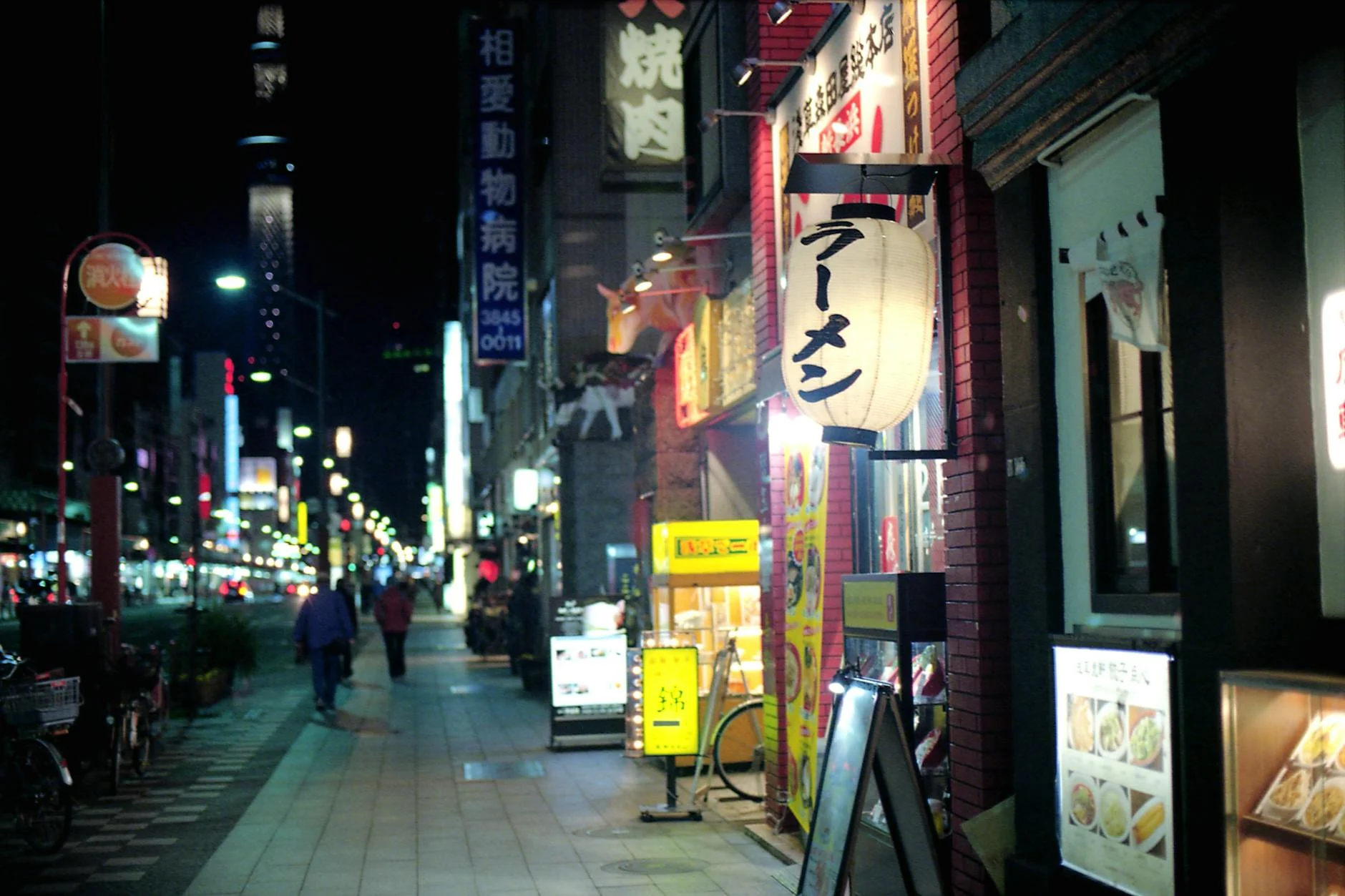Why Are Crowds Flocking to That Hidden Ramen Shop?
A Subtle yet Powerful Marketing Strategy Is Transforming Urban Backstreets
In recent years, a new phenomenon has emerged across urban backstreets and residential neighborhoods in Japan: inconspicuous ramen shops drawing long queues—despite their seemingly unfavorable locations. Far from a flaw, this deliberate positioning transforms the lack of foot traffic into a strategic advantage, using the very sight of a queue as a form of performative marketing.
1. Is Location Really a Disadvantage? — The Answer Is “No”
Traditionally, success in the food and beverage sector hinged on location: proximity to train stations, heavy foot traffic, and high visibility. However, in today’s digital-first era—dominated by Google Maps and social media—these physical advantages are no longer prerequisites for success.
What makes these hidden eateries thrive is their resonance with modern consumer psychology: the allure of exclusivity, the thrill of discovery, and the social prestige of knowing a “hidden gem.”
2. Queues as a Symbol of Trust and Exclusivity
Humans instinctively associate queues with value. Even on an unfamiliar street, the sight of people lining up outside a storefront elicits thoughts such as, “This must be good,” or “That place is probably trending.”
To harness this effect, many backstreet establishments intentionally reduce turnover: limiting seating, pacing service, and deliberately slowing down the dining experience. The result is a naturally forming queue that becomes a visual testament to quality—creating a chain of trust that draws even more attention.
What’s more, the wait itself becomes part of the experience. The notion of “a bowl worth waiting X minutes for” turns into compelling content for social media and word-of-mouth marketing, further amplifying the shop’s reputation.
3. Maps and Social Media as Engines of Discovery
Even for businesses tucked away in backstreets, the evolution of digital tools has redefined accessibility. Today, ease of entry is no longer dictated by physical location but by the quality of the digital pathway—from discovery to reservation—all facilitated via smartphone.
Review platforms like Google Reviews, Tabelog, Instagram, and other social channels now serve as the true “entrance.” Maps act as navigators, while the queue outside a shop becomes the final, persuasive cue of credibility.
This model doesn’t rely on walk-in customers drawn by chance—it is engineered to attract intentional visitors who are actively seeking the experience. As a result, it naturally cultivates a more passionate and engaged clientele.
4. The Psychology Behind “Worth the Wait”
Humans are inherently drawn to scarcity, and the longer we wait, the more likely we are to perceive the experience as exclusive or meaningful. One reason backstreet ramen shops garner such devoted followings is their ability to offer not just a meal, but a narrative: “I found this hidden gem in an unlikely spot” or “I came here on purpose.”
These stories transform the act of dining into a memorable experience. In fact, the perceived inconvenience of the location paradoxically enhances customer satisfaction—an elegant paradox that underlines how emotional engagement can outweigh physical accessibility.
Summary: People Are Drawn to Discovery and Scarcity
For modern ramen shops, location is no longer a constraint—it has become part of a deliberate brand strategy. Choosing to operate on a quiet backstreet is not a compromise, but an opportunity: when paired with queues, word-of-mouth, and digital exposure, it can amplify brand value and generate buzz.
In an era where people seek moments of “discovery” and “shared authenticity” in their everyday lives, these hidden eateries represent more than just good food—they embody the essence of contemporary marketing.




